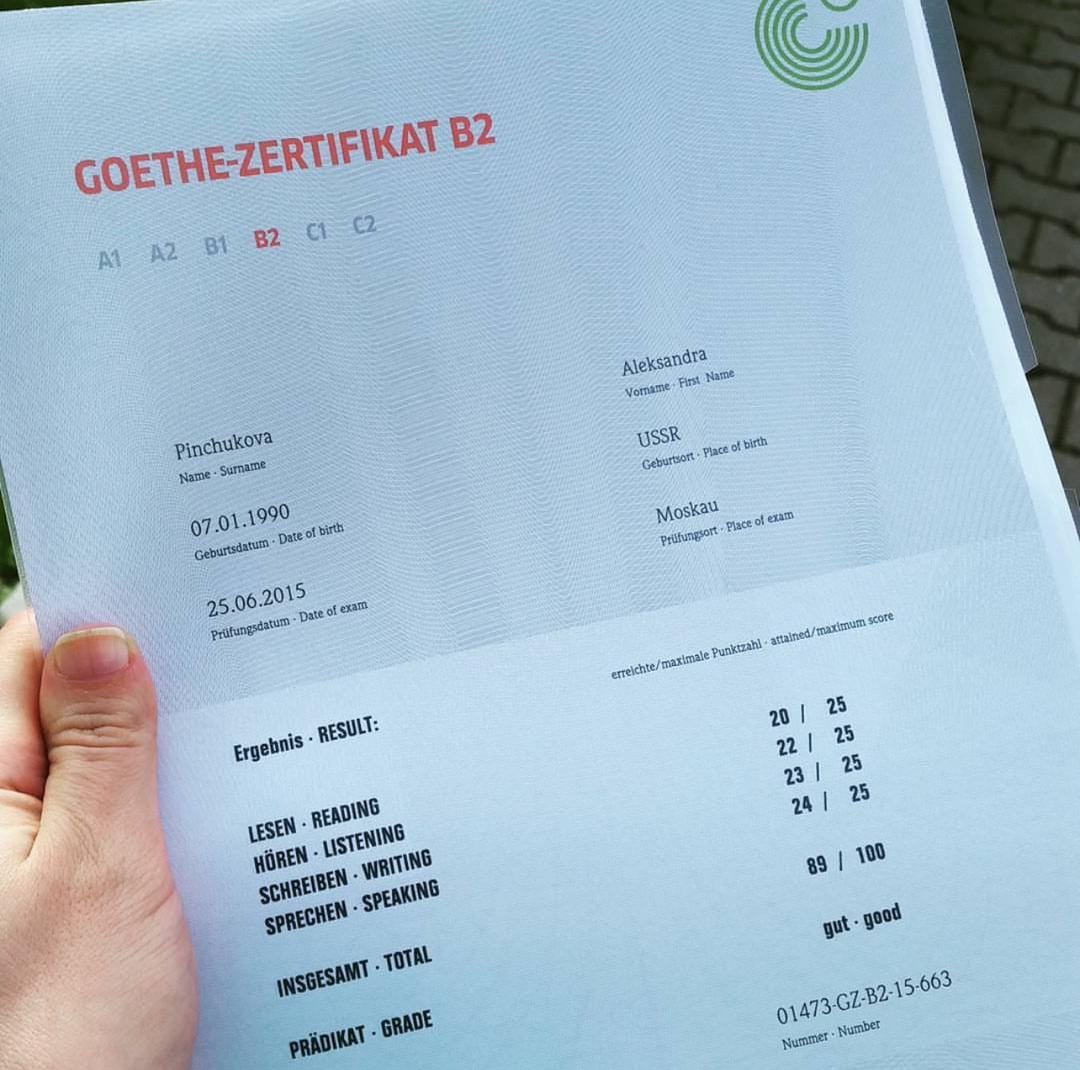This Is The Myths And Facts Behind Ösd B2
페이지 정보
작성자 Jeannette Rohu 댓글 0건 조회 4회 작성일 25-02-18 18:54본문
 Comprehending the ÖSD B2 Certification: A Comprehensive Guide for German Learners
Comprehending the ÖSD B2 Certification: A Comprehensive Guide for German LearnersIn the landscape of language credentials, the ÖSD B2 certification sticks out as a significant turning point for students of the German language. Accomplishing efficiency at this level opens various avenues, both academically and expertly, while likewise improving cultural understanding and personal development. This short article aims to offer an informative overview of the ÖSD B2 accreditation, detailing its significance, structure, preparation strategies, and often asked questions.
What is the ÖSD B2 Certification?
The ÖSD (Österreichisches Sprachdiplom Deutsch) B2 accreditation is an official language certification that evaluates intermediate proficiency in the German language. It is especially recognized in Austria, Germany, and Switzerland, making it an important asset for those preparing to study or operate in these countries.
At the B2 level, learners are anticipated to:
Understand the essences of complicated texts on both concrete and abstract subjects.
Engage with fluency and spontaneity with native speakers.
Produce clear, in-depth texts on a large range of subjects related to their interests.
Why is the ÖSD B2 Certification Important?
Academic Opportunities: Many universities in German-speaking nations need a minimum of B2-level proficiency for admissions, specifically for courses taught in German.
Expert Advantages: Employers typically look for candidates with recognized language credentials, and B2 efficiency demonstrates the ability to communicate successfully in professional settings.
Cultural Integration: Achieving this level can deepen one's understanding of German culture, society, and nuances of everyday language.
Structure of the ÖSD B2 Exam
The ÖSD B2 assessment makes up 4 primary components: Listening, Reading, Writing, and Speaking. Each area assesses various proficiencies within the language ability.
1. Listening Comprehension
In this section, test-takers listen to different audio clips such as conversations, report, and a1 Zertifikat deutsch conversations. They are needed to answer concerns that measure their understanding of material, tone, and implications.
2. Checking out Comprehension
This part includes various written products like posts, ads, Sprachniveau österreich and e-mails. Candidates need to demonstrate their capability to comprehend the context and crucial ideas, as well as analyze various kinds of texts.
3. Composing
Candidates are asked to compose a text based on a specific subject, typically requiring structured arguments and meaningful reasoning. This might include composing essays, reports, or formal letters.
4. Speaking
The speaking assessment usually includes two parts: a monologue and a discussion with an inspector. Test-takers should communicate successfully, express viewpoints, Sprachniveau öSterreich and Sprachnachweis österreich react to concerns plainly.
Scoring System
Each element is scored separately, and to pass, prospects generally should accomplish a typical rating throughout all sections. The grading requirements focus on language proficiency, coherence, fluency, and the capability to take part in discussion.
Preparation Strategies for ÖSD B2
Preparing for the ÖSD B2 exam can be a requiring yet satisfying undertaking. Here are some reliable methods that can improve your preparation:
1. Acquaint Yourself with the Exam Format
Evaluation previous exam papers to comprehend the types of concerns and tasks involved.
Tape yourself throughout practice speaking sessions to enhance fluency and osd Zertifikat Anforderungen articulation.
2. Develop Your Vocabulary
Produce vocabulary lists based upon typical themes for the B2 level, such as Work, Environment, and Health.
Use flashcards and language apps to enhance learning.
3. Practice Listening Skills
Listen to German podcasts, news stations, and audiobooks that include a range of topics and accents.
Engage in regular conversation practice with native speakers, either face to face or online.
4. Take Mock Exams
Simulate exam conditions by taking practice tests within the allocated time limits.
Examine your performance to identify areas for improvement.
5. Join Study Groups
Work together with fellow students to practice speaking and exchange resources.
Engage in discussions that challenge your understanding of intricate topics.
Typical Questions about ÖSD B2
FAQ
Q1: How long is the ÖSD B2 certification legitimate?
A1: The ÖSD B2 certificate does not end, however it is recommended to keep your language abilities upgraded through consistent practice and usage.
Q2: What resources are suggested for preparing for the ÖSD B2 exam?
sprachzertifikat a2: Books particularly created for B2 preparation, online courses, language exchange platforms, and main ÖSD practice materials are advised for efficient study.
Q3: Where can I take the ÖSD B2 exam?
A3: The ÖSD B2 exam can be taken at numerous language schools, universities, and ÖSD assessment centers worldwide. It's advisable to inspect for scheduled dates in your area.
Q4: What if I fail the exam?
A4: Candidates can retake the ÖSD B2 exam as sometimes as needed to achieve the desired outcome. Nevertheless, it's frequently helpful to take some time to improve language skills before reattempting.
Conclusion
The ÖSD B2 certification represents a crucial action in the journey of mastering the German language. By comprehending the structure of the exam, utilizing efficient preparation methods, and using readily available resources, learners can boost their efficiency and attain their language goals. Eventually, the advantages of achieving the B2 certificate extend beyond academia and work, improving the cultural and social experiences of those who aim to learn German. Embarking on this journey is not almost passing an exam; it's about welcoming a language that opens doors to brand-new opportunities and experiences.
댓글목록
등록된 댓글이 없습니다.